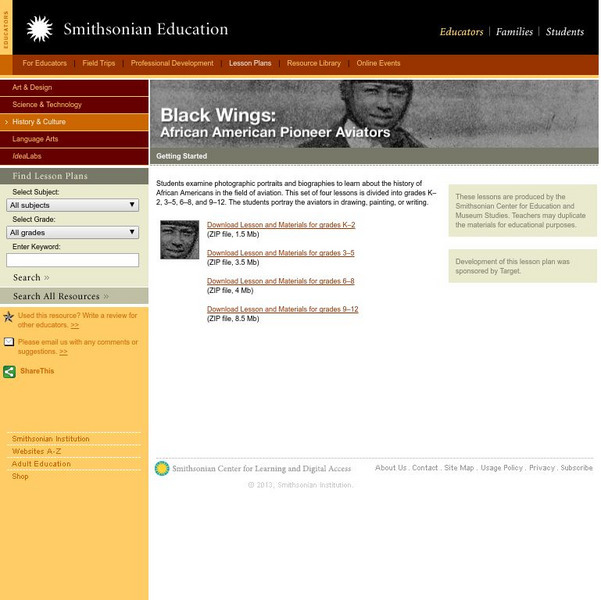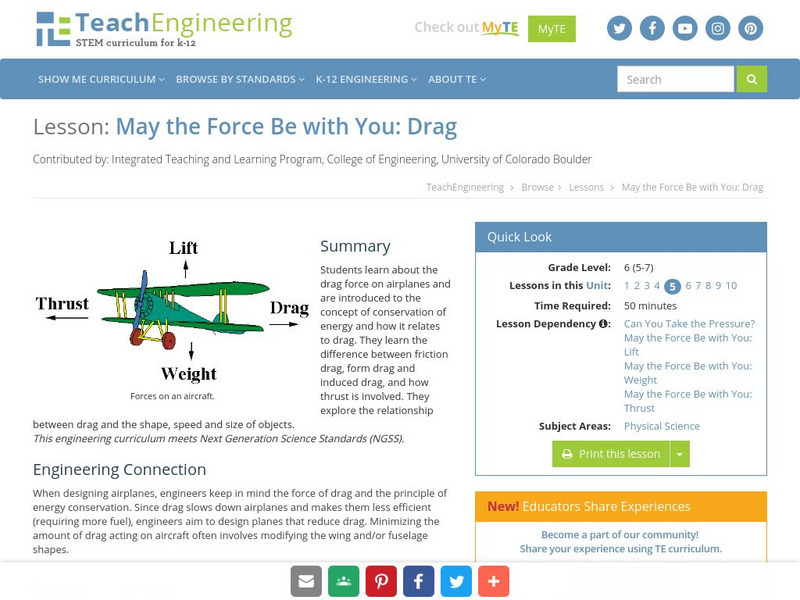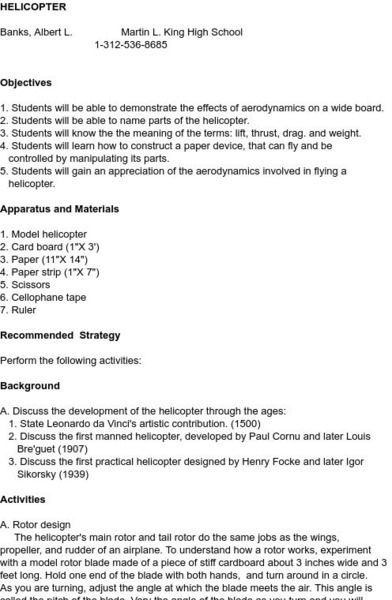PBS
Pbs Teachers: Supersonic Dream
Examine how fuel use affects the mass of different planes during flight. This lesson teaches students how to determine the per person fuel cost of a transatlantic flight for seven airplanes, and display the results on a bar graph. Three...
Smithsonian Institution
Smithsonian Education: Lesson Plan: Black Wings: American Pioneer Aviators
With this resource, teachers can select the most appropriate academic level and download a lesson plan that contains images, Word documents and PDF resources for teaching about the history of black Americans in aviation. Excellent...
Smithsonian Institution
National Air and Space Museum: Wright Brothers: Embracing the Impossible [Pdf]
In this lesson, students explore primary resources to see what people who lived in the early age of flight felt about this innovation. They then compare that response to that towards an invention of today.
Center for Innovation in Engineering and Science Education, Stevens Institute of Technology
Ciese Navigational Vectors
For this project, students use real time data to learn how pilots navigate when they fly. Students go through a series of lessons on vectors, weather maps and flight tracking, then take a pilot's test where they apply what they have...
PBS
Pbs Learning Media: Amelia Earhart: Aviator, Record Breaker, and Activist
Through two primary source activities and a short video, students will learn about Earhart's passion for flying and determination to succeed as a female aviator.
TeachEngineering
Teach Engineering: May the Force Be With You: Lift
Students revisit Bernoulli's Principle (Lesson 1 of the Airplanes unit) and learn how engineers use this principle to design airplane wings. Airplane wings create lift by changing the pressure of the air around it. This is the first of...
TeachEngineering
Teach Engineering: May the Force Be With You: Drag
This lesson plan explores the drag force on airplanes. The students will be introduced to the concept of conservation of energy and how it relates to drag. Students will explore the relationship between drag and the shape, speed and size...
Discovery Education
Discovery Education: Inventors and Inventions 2: Air and Space
After discussing important flying inventions, students explore technological design by making paper airplanes.
Alabama Learning Exchange
Alex: Building a Paper Airplane Using Bernoulli's Principle
This is a culmination activity used after young scholars have studied Bernoulli's Principle as part of a unit on forces and fluids. Students will use the Internet, textbooks, library resources and their cooperative learning group to...
Science and Mathematics Initiative for Learning Enhancement (SMILE)
Smile: Lab Work: Come Fly With Me
This site by the Illinois Institute of Technology lets students use a vacuum cleaner hose, ping pong balls, straws and other materials to investigate the effect of moving air upon the surfaces which it hits. Principles are applied as...
Science and Mathematics Initiative for Learning Enhancement (SMILE)
Smile: Lab Activity: Helicopter
The Illinois Institute of Technology lets young scholars investigate the aerodynamics of a helicopter, focusing on the variables which effect the lift, thrust, drag, and weight. Students investigate the effects of aerodynamics on a wide...
Other popular searches
- Flight, Aviation
- Flight Aviation
- Flight, Aviation Powerpoint
- Flight Aviation Powerpoint
- Flight, Aviation Activities
- Flight Aviation Activities
- Aviation Flight Trainging




![National Air and Space Museum: Wright Brothers: Embracing the Impossible [Pdf] Lesson Plan National Air and Space Museum: Wright Brothers: Embracing the Impossible [Pdf] Lesson Plan](https://d15y2dacu3jp90.cloudfront.net/images/attachment_defaults/resource/large/FPO-knovation.png)






